With the signing of the secret Treaty of London in 1915, which was the condition for Italy’s entry into the First World War on the side of the Triple Entente, Italy assured itself the territory of the hitherto Austrian Küstenland or Litorale, including present-day Primorska and Istria. In November 1918 the Italian army occupied these areas. Until mid-1919 the Julian March (Italian: Venezia Giulia), as the newly annexed territory was known, was administered by a military government based in Trieste, after which a general civil commission was established in the occupied territory. Following the signing of the Treaty of Rapallo between Italy and the Kingdom of Serbs, Croats and Slovenes in November 1920, the territory was definitively annexed to Italy along with a population of 600,000 Slovenes and Croats.
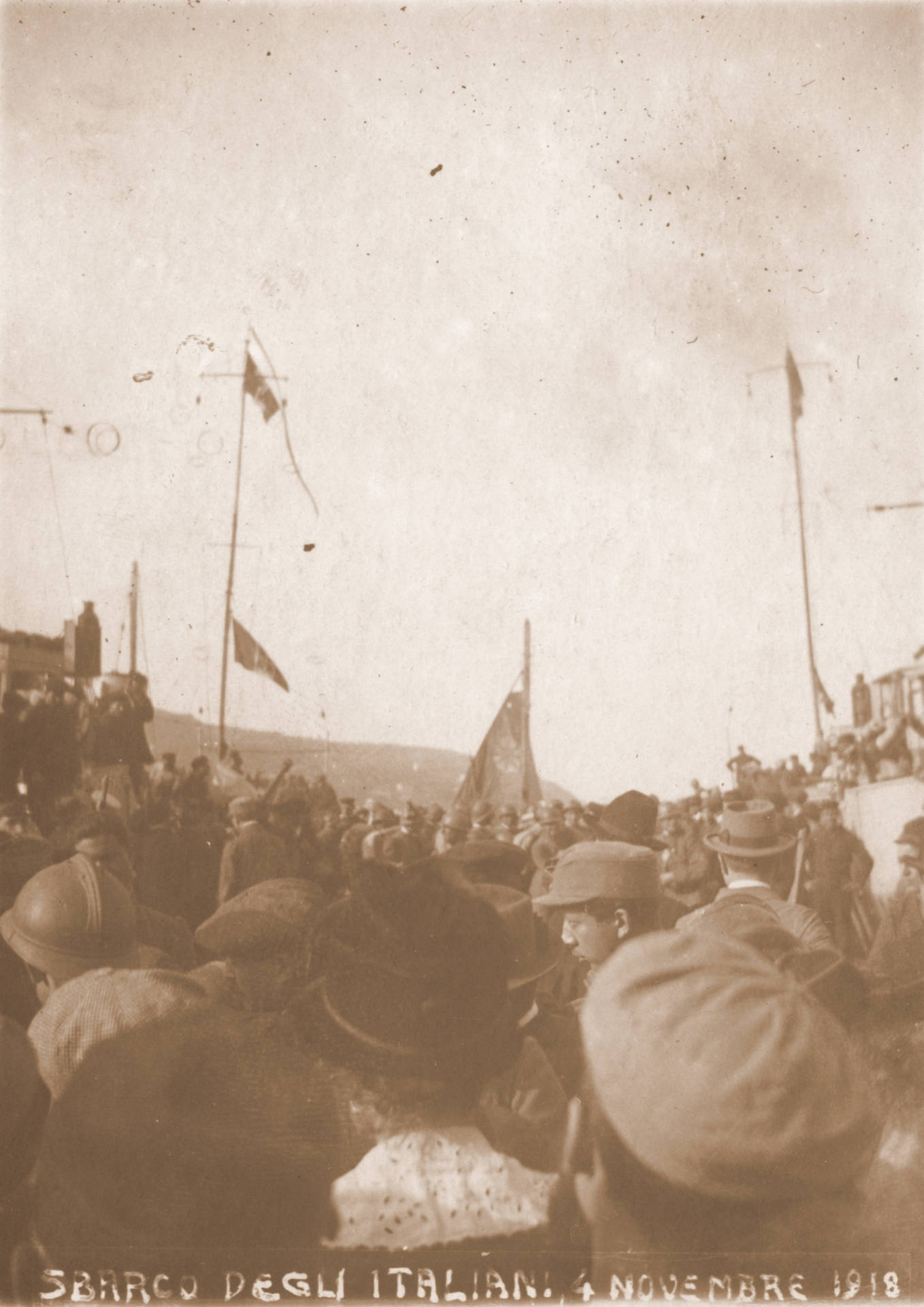 Italian troops disembarking in Koper on 4 November 1918.
Italian troops disembarking in Koper on 4 November 1918.
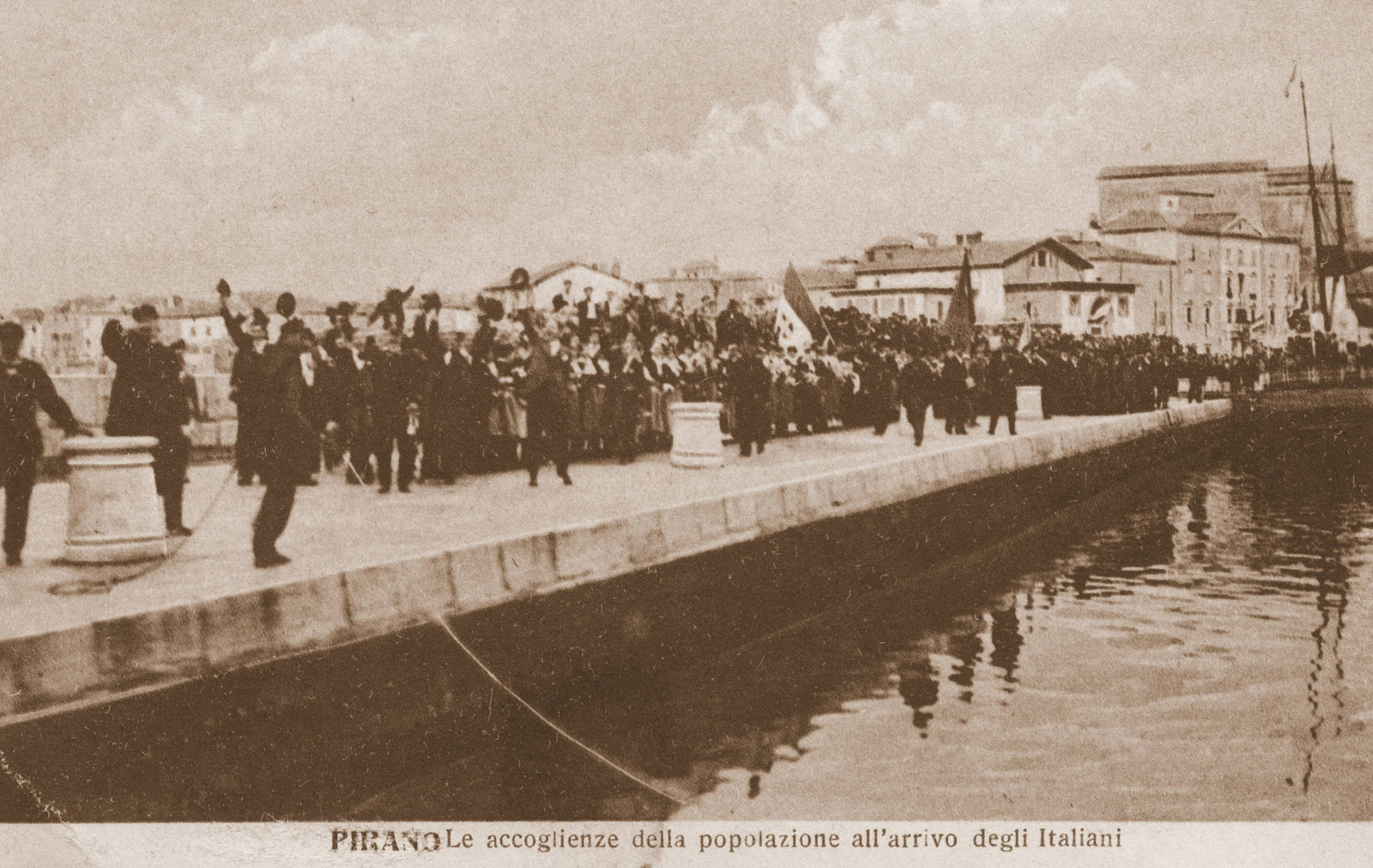 The inhabitants of Piran awaiting the arrival of the Italian army.
The inhabitants of Piran awaiting the arrival of the Italian army.
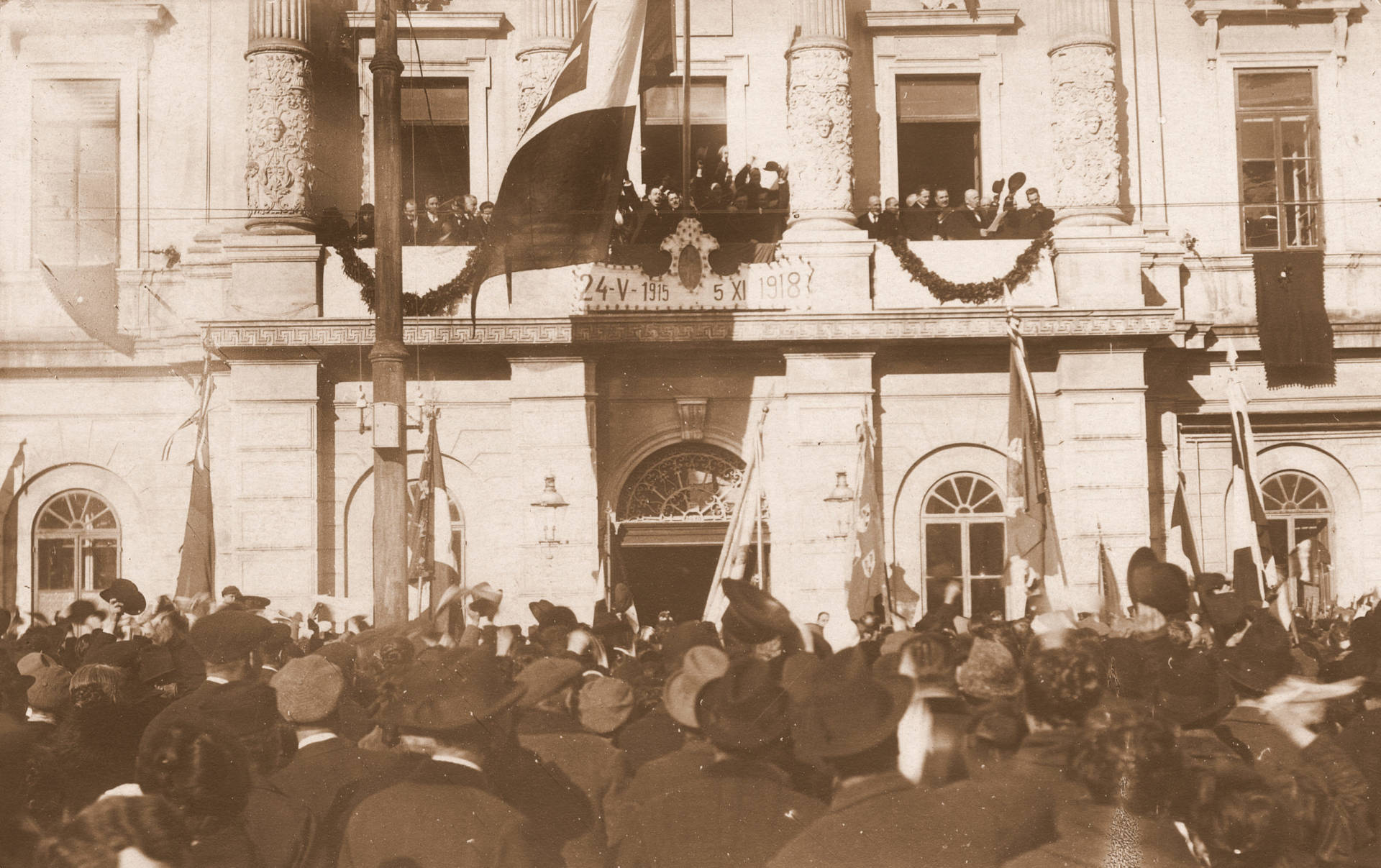 General Petitti di Roreto, governor of the Julian March, addresses the crowd in Piran on 5 November 1918.
General Petitti di Roreto, governor of the Julian March, addresses the crowd in Piran on 5 November 1918.
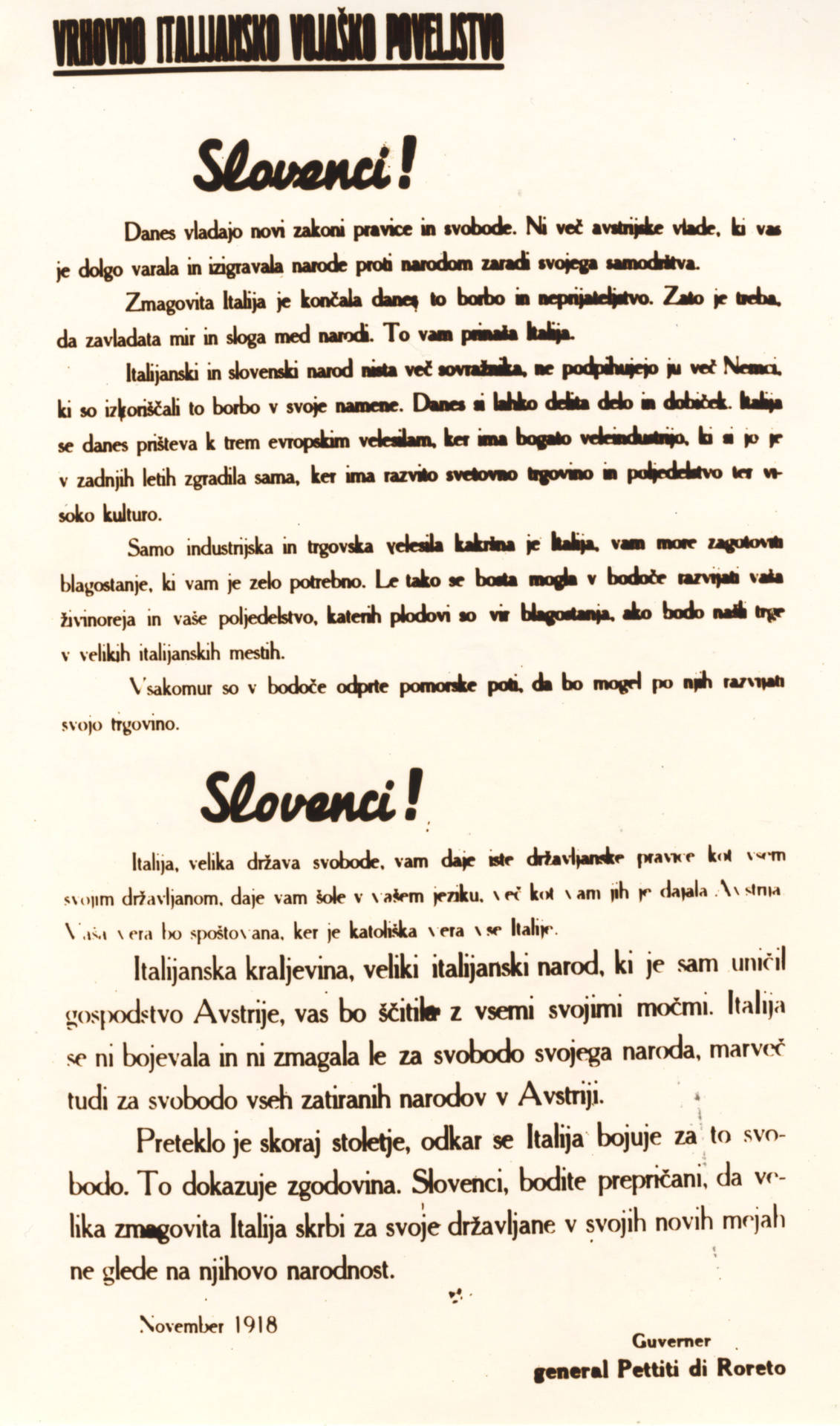 The governor of the Julian March promises that Italy will protect the rights of the Slovene minority in the new state.
The governor of the Julian March promises that Italy will protect the rights of the Slovene minority in the new state.
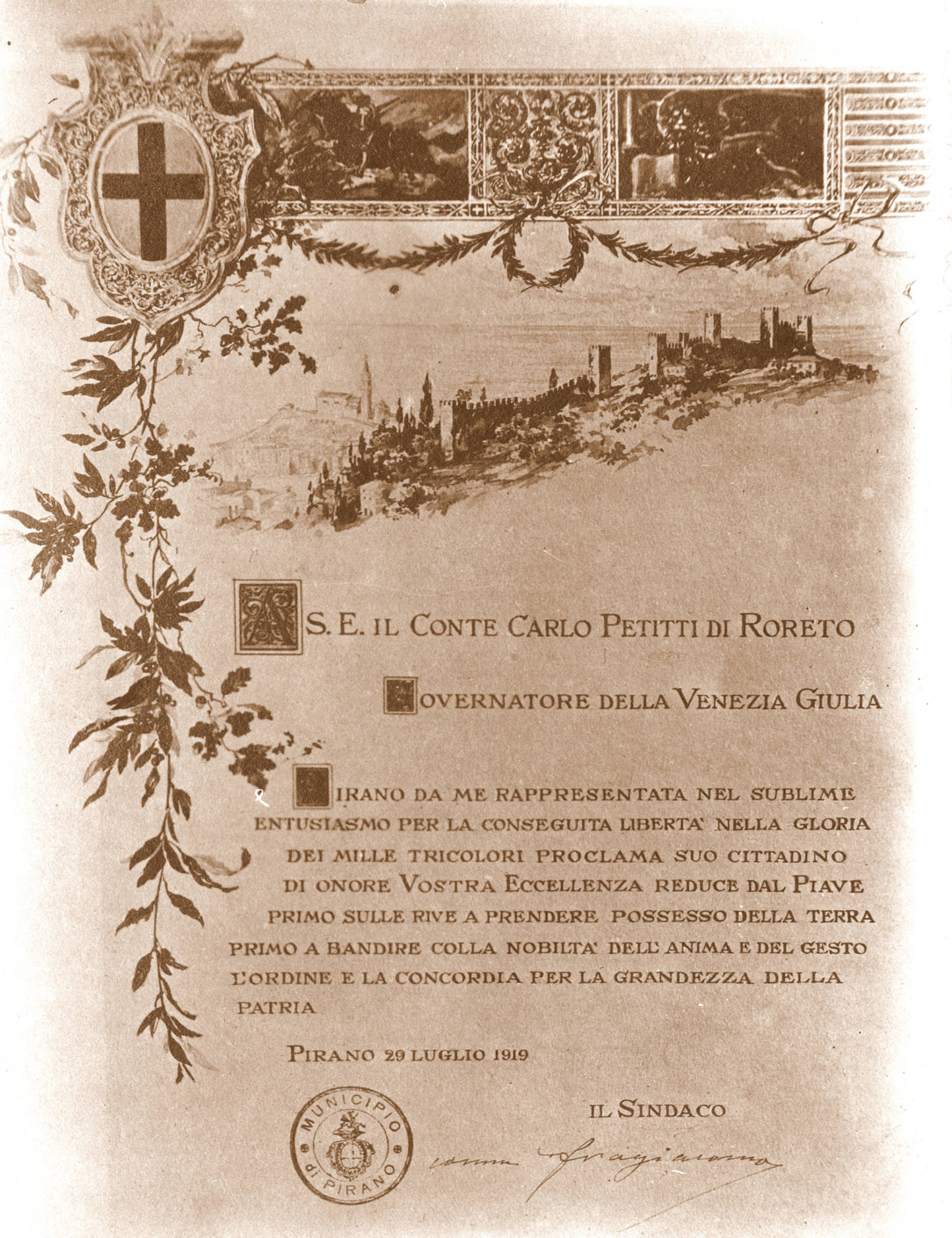 Memorandum presented to the governor by the town of Piran in 1919.
Memorandum presented to the governor by the town of Piran in 1919.
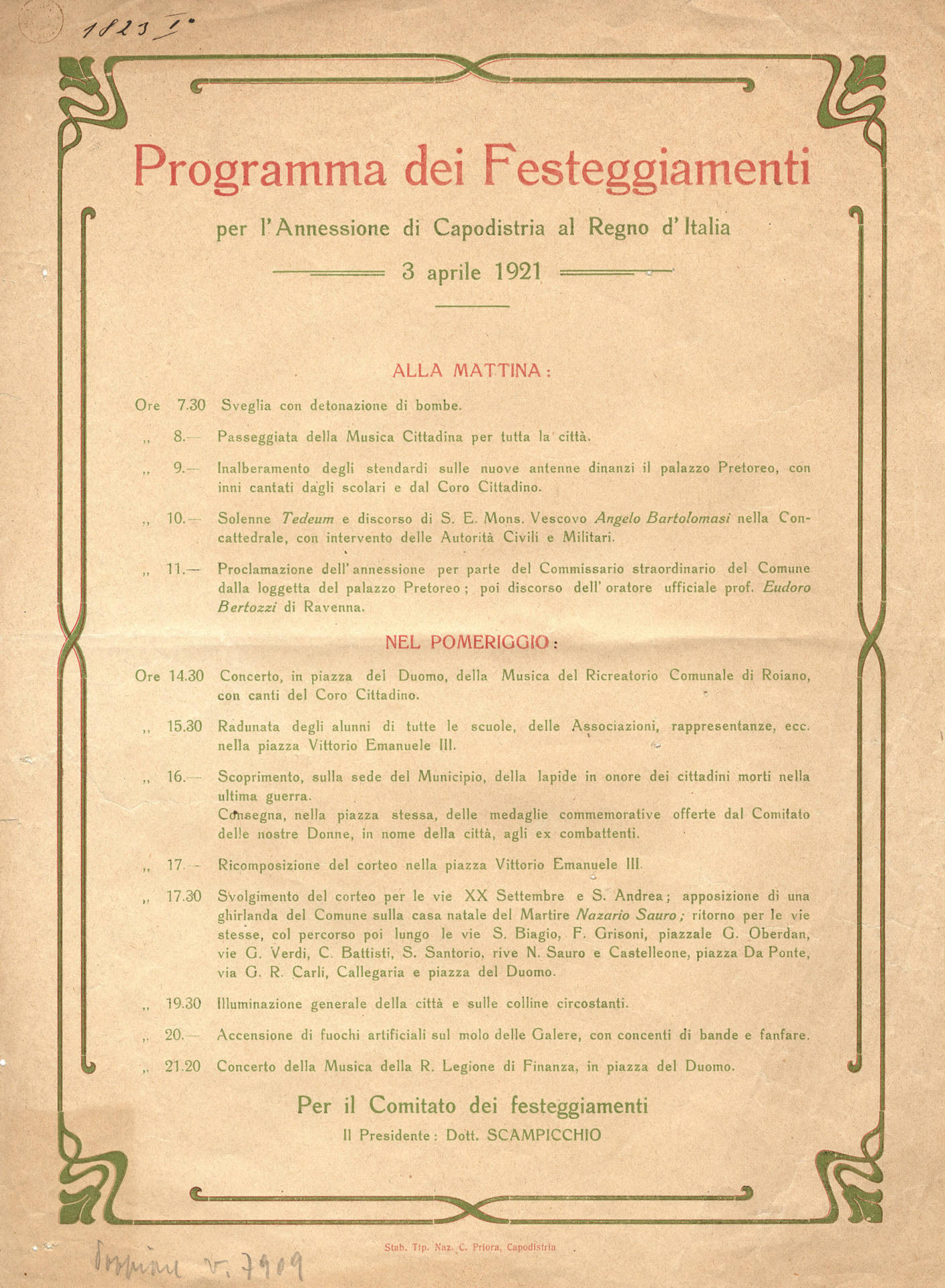 The Treaty of Rapallo entered into force on 20 March 1921. The event was celebrated in Koper on 3 April.
The Treaty of Rapallo entered into force on 20 March 1921. The event was celebrated in Koper on 3 April.
 Mourning ceremonies were organised in Slovenia and Croatia. Postcard on which Hinko Smrekar depicted the suffering of the Slovenes who passed under Italian rule.
Mourning ceremonies were organised in Slovenia and Croatia. Postcard on which Hinko Smrekar depicted the suffering of the Slovenes who passed under Italian rule.
 Postcard with poem by Igo Gruden.
Postcard with poem by Igo Gruden.